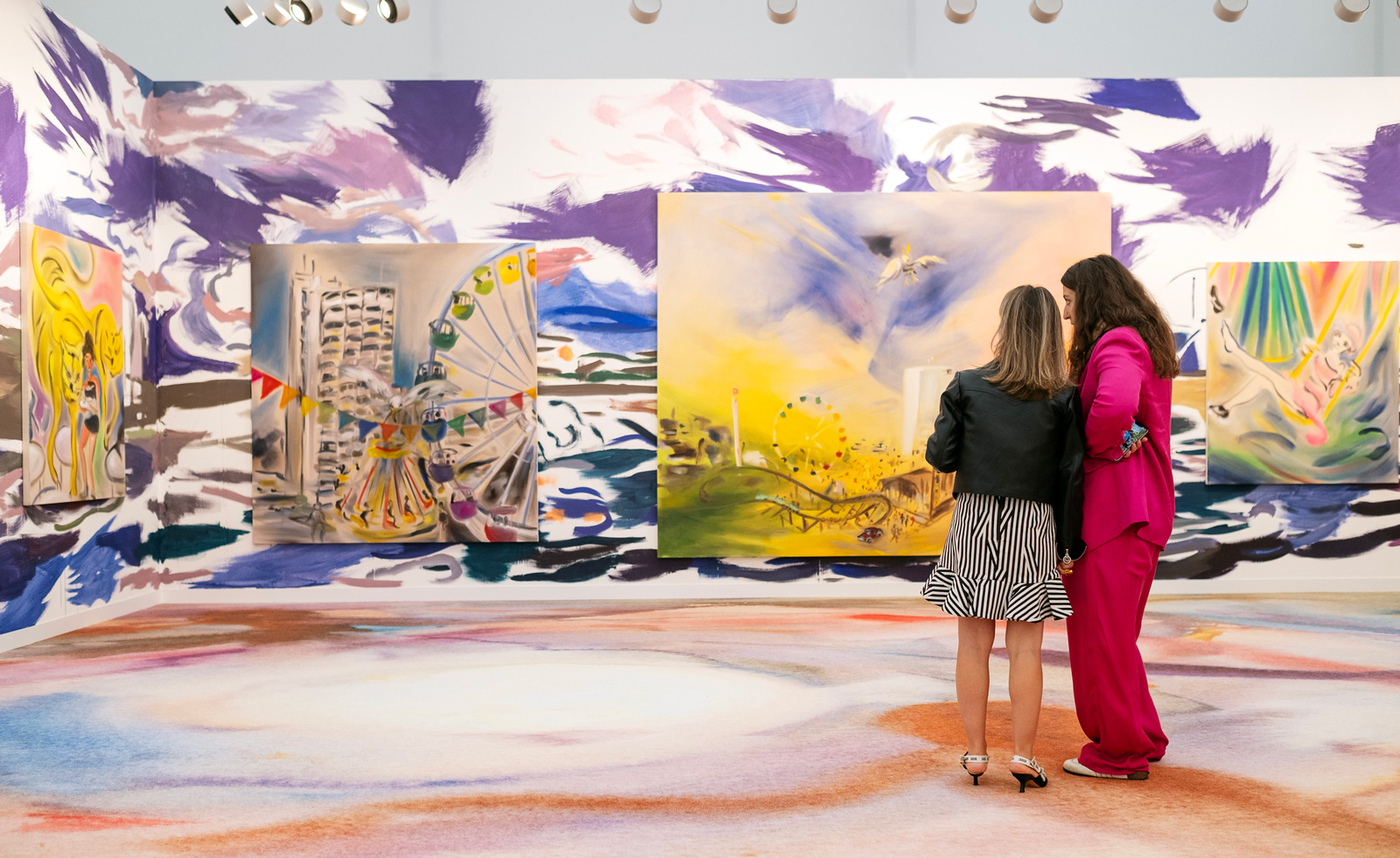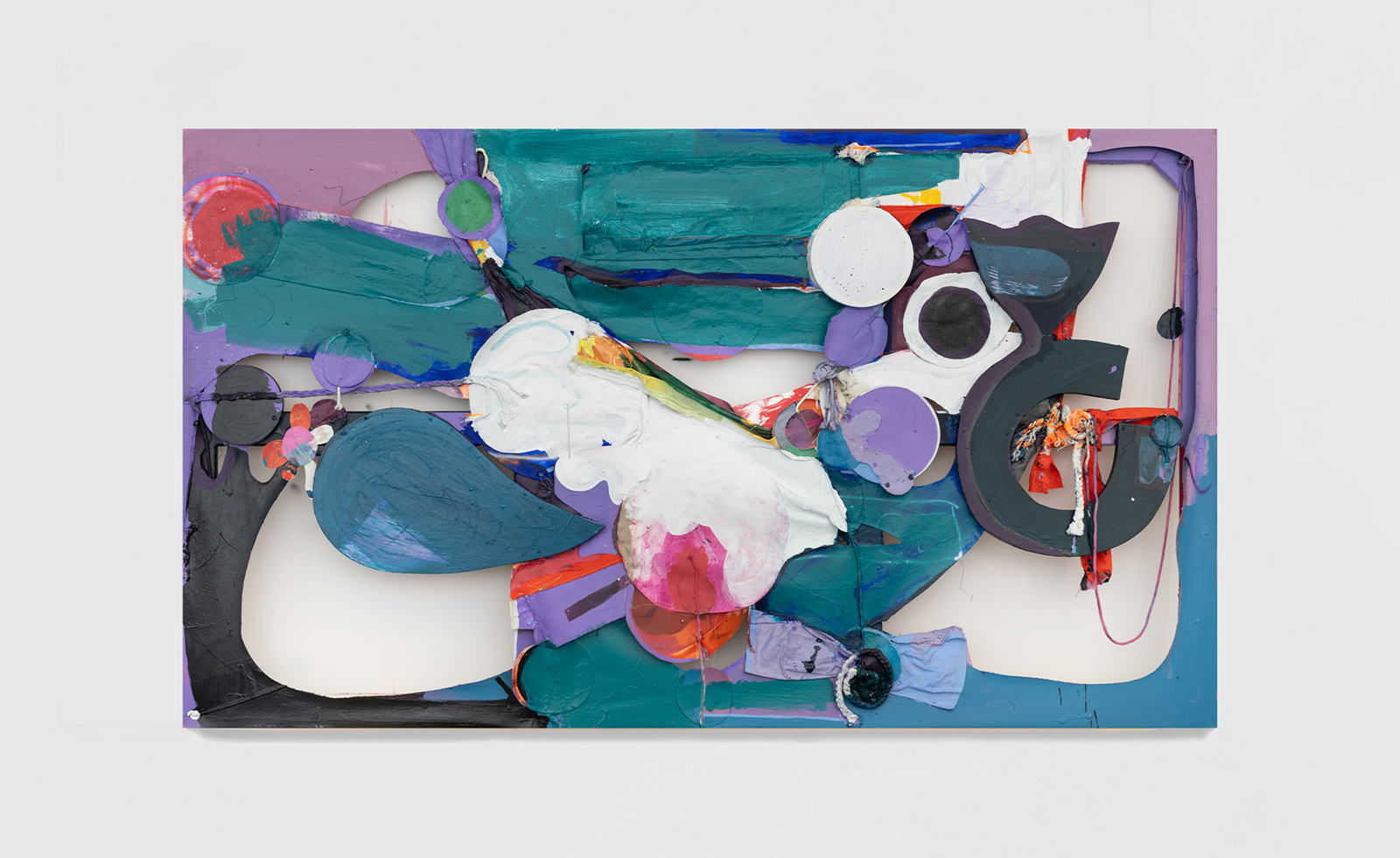Lines men: architects Carmody Groarke redraw artist Julian Opie's London studio

A first glimpse inside Julian Opie’s studio in Shoreditch, East London, does not reveal much about its recent architectural transformation. Its battered floorboards and hefty timber roof trusses could have been there for centuries.
In fact, hardly anything in this refurbished old furniture workshop, which has served as the artist’s base – and, for a while, live/work space – since 1987, screams ‘new’. Yet new it is, following a complete overhaul by Carmody Groarke in a process that lasted over four years. It is testament to the London practice’s masterful sleight of hand in merging old and new.
The idea for the project was born when planning permission was granted for a big new hotel in a plot just feet away from the studio’s back wall. Concerned about privacy and changes in light, Opie decided to take the opportunity and start a project of his own. The plan was to extend his workspace – outgrown by his studio team – adapting it in response to the construction next door.
Kevin Carmody and Andy Groarke were already his go-to architects and this would be the latest in a series of collaborations with the artist, the first being Opie’s London home back in 2006. ‘I appreciate Carmody Groarke’s straightforward approach and brilliant understanding of space, so they seemed the obvious choice of architect,’ Opie explains.

Carmody Groarke's steel-clad addition increases the space by some 100 sq m.
It was not just their established relationship that made the young London practice the perfect partner. Groarke and Carmody met at David Chipperfield’s office while – rather fittingly – working together on another artist’s studio, this one for Antony Gormley. They joined forces and set up shop soon after, and their independent practice turned ten years old in 2016. Yet their portfolio shows a maturity and diversity rare in an emerging practice. Indeed, ‘emerging’ hardly seems an appropriate tag. While it is not uncommon for a new practice to take the better part of ten years just to complete its first flagship project, Carmody Groarke has already had plenty of attention-grabbing commissions, including a temporary nightclub, a collaboration with Carsten Höller for Fondazione Prada, and timber pavilions for the Frieze Art Fair.
The pair have a knack for creating experiences and navigating different typologies and scales, especially when it comes to projects merging arts and architecture. Their affinity with the arts has been key since the practice’s inception, their output ranging from large-scale galleries to artists’ ateliers and exhibition design. ‘Our first project, and the springboard to set up our practice, was a competition win, the Coney Island Parachute Pavilion,’ recalls Groarke. ‘It combined culture, pavilions and temporary architecture, art, and our desire to seek and create opportunities. All seem to be themes that became recurrent in our practice.’
Their work often straddles creative disciplines and they are fascinated by artists’ take on the environment, built and otherwise. ‘Artists have very precise ways of seeing and experiencing the world, which enriches the discussion of what an architectural project can be,’ explain the architects. ‘We also admire artists’ ability to maintain a conceptual clarity throughout a body of work. Making exhibitions for fine art or museum collections has always been a great source of research for the studio. It forces us to think of how to make sense of our culture and our times.’

Julian Opie designed our January 2018 limited-edition cover, available to subscribers
The Opie studio project called for a complete reimagining and extension of the four-level, mid-19th-century brick building, increasing space while safeguarding privacy. The architects’ solution was topping the existing industrial building with a profiled anodised aluminium sheet structure that captures and reflects daylight. The new design’s skylights ensure the studio’s creative operations remain out of sight from its neighbour, while light can flood in.
There is a playful contrast between brick and aluminium, a nod to the architects’ ongoing interest in material experimentation. Their choices always respond to each project’s needs, so there’s huge variety in their work, from the structural bricks of the 2016 Highgate House, to the sculptural concrete volumes of a house and studio in Lambeth, one of their upcoming works. ‘We like to manipulate materials and light in a way that increases your awareness of your surroundings,’ says Groarke.
Inside, working with the building’s original character was important to Opie. ‘I did not want to lose the inherent mid-19th-century industrial qualities that remained; the wooden floors and beams, the steep, open staircases and tall windows,’ he says. The architects obliged, employing a soft touch and some skilful architectural handling. Any new floorboards are reclaimed, the roof and external openings were maintained and, while the interior was almost completely gutted and cleared from additions and tweaks spanning decades, the current composition feels remarkably organic and natural. The steel-beam addition at the back manages discreetly to increase overall floorspace by some 100 sq m.
Each floor was opened up to create spacious studio rooms and open-plan desk areas, and circulation was streamlined. Hints to the building’s past live/work use were carefully removed, and domestic areas were transformed into functional workspaces – the place is usually buzzing with up to ten employees.

Opie's collection of Egyptian artefacts includes, from left, a statuette of kneeling man (C 2000-1800 BC); faience bead masks from the Roman period; a statuette of Ptah Sokar Osiris (C 660-500 BC); and limestone relief panels.
Opie’s studio is just coming out of a busy period with the opening last year of two major solo exhibitions – one in Suwon, South Korea, and the other at the National Portrait Gallery, London. Next up are shows at London’s Alan Cristea Gallery in April, and at Melbourne’s National Gallery of Victoria in November. Careful planning of the layout was essential in order to boost efficacy during the most demanding times.
The architects have been just as busy. They are currently putting the finishing touches to a summer pavilion for the White Cube gallery at Glyndebourne in East Sussex and working on a spectacular new suite for the Burgh Island Hotel in Devon. One of their largest buildings to date, the Windermere Jetty Museum, will open later in 2018, while future work includes the renovation and extension of the Dorset County Museum in Dorchester and the Museum of Science and Industry in Manchester.
But for now, they can enjoy the appreciation of a satisfied customer. Opie, meanwhile, hopes his new studio will provide a model for other developments in his area. ‘We deal with the building almost exclusively from the front and inside, and the new extension exterior is at the back in a narrow, graffiti-covered alley,’ says Opie. ‘I only recently went out there to take a look and I am proud of how my building looks both cared for and dynamic and ready for work. It’s a good mix of 19th- and 21st-century industrial functional design with no frills but with good materials and sensible generous proportions. It looks like much of the street will soon follow suit.’
As originally featured in the January 2018 issue of Wallaper* (W*226)

In Opie’s studio, his model for a metal statue is surrounded by pieces from his own art collection, including, left, a painted Egyptian wooden head (C 1600-1100 BC) and, second from right, a terracotta bust of the composer Christoph Gluck by Jean-Antoine Houdon (C 1770)
INFORMATION
For more information, visit the Julian Opie website and the Carmody Groarke website
Wallpaper* Newsletter
Receive our daily digest of inspiration, escapism and design stories from around the world direct to your inbox.
Ellie Stathaki is the Architecture & Environment Director at Wallpaper*. She trained as an architect at the Aristotle University of Thessaloniki in Greece and studied architectural history at the Bartlett in London. Now an established journalist, she has been a member of the Wallpaper* team since 2006, visiting buildings across the globe and interviewing leading architects such as Tadao Ando and Rem Koolhaas. Ellie has also taken part in judging panels, moderated events, curated shows and contributed in books, such as The Contemporary House (Thames & Hudson, 2018), Glenn Sestig Architecture Diary (2020) and House London (2022).
-
 A Xingfa cement factory’s reimagining breathes new life into an abandoned industrial site
A Xingfa cement factory’s reimagining breathes new life into an abandoned industrial siteWe tour the Xingfa cement factory in China, where a redesign by landscape specialist SWA Group completely transforms an old industrial site into a lush park
By Daven Wu
-
 Put these emerging artists on your radar
Put these emerging artists on your radarThis crop of six new talents is poised to shake up the art world. Get to know them now
By Tianna Williams
-
 Dining at Pyrá feels like a Mediterranean kiss on both cheeks
Dining at Pyrá feels like a Mediterranean kiss on both cheeksDesigned by House of Dré, this Lonsdale Road addition dishes up an enticing fusion of Greek and Spanish cooking
By Sofia de la Cruz
-
 Don't miss these seven artists at Frieze Los Angeles
Don't miss these seven artists at Frieze Los AngelesFrieze LA returns for its sixth edition, running 20-23 February, showcasing over 100 galleries from more than 20 countries, as well as local staples featuring the city’s leading creatives
By Annabel Keenan
-
 Frieze Sculpture takes over Regent’s Park
Frieze Sculpture takes over Regent’s ParkTwenty-two international artists turn the English gardens into a dream-like landscape and remind us of our inextricable connection to the natural world
By Smilian Cibic
-
 Frieze London 2024: everything to see and do
Frieze London 2024: everything to see and doLondon Frieze Week runs until 13 October 2024; here are the must-sees inside and outside the fair
By Amah-Rose Abrams
-
 Frieze New York 2024: what to see in and around the city
Frieze New York 2024: what to see in and around the cityFrieze New York 2024 (until Sunday 5 May) sees the city’s ample spring season programming celebrated at The Shed
By Osman Can Yerebakan
-
 Frieze LA 2024 guide: the art, gossip and buzz
Frieze LA 2024 guide: the art, gossip and buzzOur Frieze LA 2024 guide includes everything you need to know and see in and around the fair
By Renée Reizman
-
 Andrea Bowers’ sculptural chandelier for Ruinart reflects a shared commitment to environmental conservation
Andrea Bowers’ sculptural chandelier for Ruinart reflects a shared commitment to environmental conservationAndrea Bowers has partnered with Ruinart to create a work to be unveiled at Frieze LA, before it finds a permanent home at Maison Ruinart’s HQ in Reims
By Hannah Silver
-
 MJ Harper’s performance piece at London’s Koko will close Frieze Week in style
MJ Harper’s performance piece at London’s Koko will close Frieze Week in styleArtist MJ Harper will premiere ‘Arias for a New World’ at Koko in London this Sunday, 15 October 2023
By Amah-Rose Abrams
-
 The Modern Institute explores otherworldly narratives at Frieze London 2023
The Modern Institute explores otherworldly narratives at Frieze London 2023The Modern Institute is showcasing the work of artists Rachel Eulena Williams, Jim Lambie and Andrew Sim and more
By Anne Soward